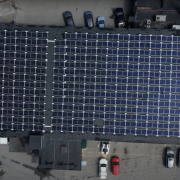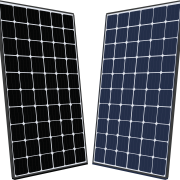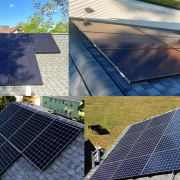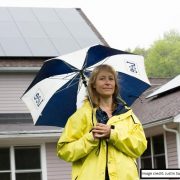Solar power, shade coming to MSU parking lots
By RJ Wolcott
July 7, 2017
Read the original article Here
EAST LANSING – Among the active construction projects on Michigan State University’s campus this summer is one that will keep parked cars cool. And research labs, too.
Solar panel parking bays — covered parking capable of collecting energy from the sun — are going up on five parking lots along the southern portion of campus.
Standing more than 14 feet tall at their lowest point and collectively spanning more than 700,000 square feet, the bays will collect between 10 and 11 megawatts of power during peak hours, according to Wolfgang Bauer, a professor of physics and senior consultant with the Office of the Executive Vice President.
“It’ll be the largest non-utility solar array in the state,” he said, adding that MSU’s array will provide an example to other institutions of what can be done.
Around noon on a sunny summer day, the array is expected to generate about one-sixth of the campus’ total energy needs. Annually, it’s expected to save MSU from having to generate or purchase around 15,000-megawatt hours of electricity, between five and six percent of energy consumption on campus.
“It’s a big chunk,” Bauer said, standing in the shadow of the first series of panels built on lot 89 at the corner of Farm Lane and Mt. Hope Road.
The bays are built tall to allow RVs and other vehicles driven by tailgaters on football Saturdays to park under them with ease.
The number of parking spaces in each lot isn’t expected to change as a result of the project, and parking fees won’t be impacted, Katie Gervasi, a spokesperson for MSU’s Infrastructure Planning and Facilities Office, said.
The parking bays at lot 89 will be ready for motorists by the start of the fall semester, with the other four lots coming online before the end of the year.
The array will consist of more than 40,000 individual solar panels measuring 6 feet wide by 3 feet tall.
Once operational, the solar panel parking bays will generate roughly 200 times more electricity than what’s created by the few hundred panels located on the main campus, Bauer said. Generating solar power instead of purchasing it off the grid could save MSU as much as $10 million over the next 25 years.
The parking bays are being built by Inovateus Solar, which will own the structures and sell all of the power collected to MSU at a fixed rate during the 25-year agreement. The panels are capable of turning 17% of the solar power collected into usable electricity, Bauer said, in line with the most advanced panels available today.
It’ll be Inovateus’ largest carport project once completed, said John Gulanick, a field installation supervisor with the South Bend company.
Each section is being anchored to the ground by a steel rod plunging 28 feet into the earth encased in concrete to ensure the bays can’t blow away. The panels can withstand hail and generate a small amount of heat, causing any snow to slide off.






